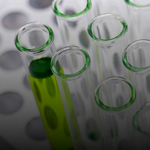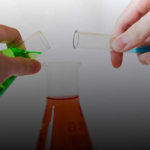Section 1
Preview this deck
Primary succession
Front
Active users
0
All-time users
0
Favorites
0
Last updated
6 years ago
Date created
Mar 1, 2020
Cards (57)
Section 1
(50 cards)
Primary succession
Occurs endangered habitats when an island rises from the sea or when rocks and soil are deposited
Succession
The process by which a species in a community or replaced overtime
Community
A group of interacting individuals of a single species located within a particular area
Producers
Organism that capture light energy and converts it into chemical forms the process of photosynthesis
Exploitative competition
Species compete indirectly for a shared resource
Density dependent
When birth and death rate changes as the density of a population changes
Relative species abundance
The number of individuals in a species in a given Community compared to the individuals of the other species in the community
Ecosystem
Consists of communities or organisms together with the physical environment they share
Coevolution
Two species that interact May trigger evolutionary change in each other as a consequence of their interactions what's your what did you ask her
Consumers
Obtain their energy and nutrients by eating other organisms
S shaped
A population grows in nearly exponentially at first but then stabilizes at the maximum population size
Diversity
Species richness and relative species abundance
Population
A group of interacting individuals of a single species located within a particular area
Secondary succession
The process by which communities regain this exceptional state that existed before a disturbance
How do communities change over time
...
Mutualism
Both species benefit
Competition
When two species share an important limited resource
Mimicry
New type of adaptation arising from predatory cray interactions in which a species evolves to imitate the appearance of something unappealing to its would be predator
keystone species
Sturgeon species have disproportional large effects relative to their own abundance on the types and abundance of other species in a community these influential species are called keystone species
Commensalism
One species benefits and no cost to the other
Growth limiting factors
Minecraft space disease Predators food shortages
Warning correlation
Bright colors or striking patterns
Exploitation
One species benefits and the other is harmed
Types of exploitation
Herbivores predators and parasites
Biotic
Having to do with life
Exponential growth
Occurs when a population increases by a constant rate over a constant time
Induced defenses
Responses that I directly stimulated by the tracks from herbivores
Decomposers
Breakdown the tissue from once-living organisms to obtain their energy
Primary composers
Krill
Species richness
The total number of different species that live in a community
Causes of changes
When animals die or give birth and when they come and when they go
Carry capacity
Maximum population size that can be sustained in a given environment
Niche
Sum total of the coordination and resources a species or population needs in order to survive and reproduce successfully in its particular habitat
Species interactions
Mutualism commensalism exploitation competition
Abiotic
The atmosphere water in Earth's crust
Symbiosis
Mutualistic species live together
Growth rate
Birth + immigration Death + emigration
In a population with an s shaped growth curve after an initial period of Rapid increase the number of individuals
Drops rapidly
Competitive exclusion
The inferior competition eventually losing so much ground to the superior rifle that it becomes extinct
How do you calculate the population density
Divide the population size by total area
Net primary productivity
The amount of energy captured by photosynthesis organisms minus the amount big spend on site of respiration
K
Density dependant
Population density
The number of individuals per unit of area
R
Density independent
Competition
Both species may be harmed
Density independent
Populations are held in check by factors that are not related to the density of the population
Population size
The total number of individuals in the population
Interference competition
One organism directly excludes another from the use of a resource
NPP
Energy acquired through photosynthesis
Exponential growth or j-shaped
Increases at a constant rate
Section 2
(7 cards)




